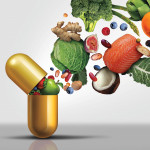Moms living with HIV can safely breastfeed their babies if they’re on HIV meds and maintain an undetectable viral load, according to new recommendations from the American Academy of Pediatrics (AAP) published in the journal Pediatrics.
“The risk of HIV transmission via breastfeeding from a parent with HIV who is receiving antiretroviral treatment (ART) and is virally suppressed is estimated to be less than 1%,” according to the article. (Note: The same guidelines apply to chest feeding for trans men, though we will use the term breastfeeding throughout this article.)
The pediatrics group had previously advised that women with HIV not breastfeed their infants regardless of their viral load and treatment regimen due to the risk of mother-to-child transmission.
Untreated HIV can be transmitted through breast milk as well as blood, semen, pre-cum, rectal fluids and vaginal fluids. For more details, see the POZ Basics on HIV Transmission.
Thanks to effective treatment, many people with HIV are living healthy lives and planning families. In fact, about 5,000 people with HIV give birth each year in the United States.
Antiretroviral treatment is recommended for all people with HIV to reduce morbidity and mortality and to prevent the transmission of HIV to others. A person who adheres to meds consistently and maintains an undetectable viral load cannot transmit HIV to another person via sex. This fact is referred to as Undetectable Equals Untransmittable (U=U).
But things have changed in the era of U=U. The viral load threshold for reducing transmission via breastfeeding is unknown, but only a couple of cases of transmission from mothers with a viral load below 50 have been reported, according to a POZ article titled “Can Women With HIV Safely Breastfeed?”
Moving forward, AAP recommends that pediatricians offer support and counseling for women who opt for breastfeeding and are on ART as prescribed and achieving U=U, according to the AAP report.
“The AAP recommends that for people with HIV in the United States, replacement feeding (with formula or certified, banked donor human milk) is the only option that is 100% certain to prevent postnatal transmission of HIV,” the report states. “However, pediatric health care professionals should be prepared to provide infant feeding counseling and a family-centered, culturally sensitive, harm reduction approach for people with HIV on ART with sustained viral suppression who desire to breastfeed.”
The AAP’s new stance aligns with that of the Department of Health and Human Services (HHS), which made similar updates to its recommendations for infant feeding this year. HHS stated that “individuals with HIV who are on ART with a sustained undetectable viral load and who choose to breastfeed should be supported in this decision.”
Breastfeeding confers many benefits, including better infant nutrition, improved health, mother-child bonding, lower cost and reduced stigma.
The Biktarvy single-tablet regimen is safe and well tolerated during pregnancy, maintains viral suppression during the second and third trimesters and postpartum, and protects babies from vertical transmission, according to updated label information approved by the Food and Drug Administration (FDA).
This update makes Biktarvy the only second-generation integrase inhibitor with in-label clinical trial data and FDA approval for virologically suppressed adults who are pregnant.
To learn more, click #Pregnancy. There, you’ll find headlines such as “HIV and Pregnancy,” “Biktarvy Is a Safe and Effective Option During Pregnancy” and “Vaginal Ring and Oral PrEP Found Safe for HIV Prevention Throughout Pregnancy.”
For more, read POZ’s Health Basics on HIV Prevention and Undetectable Equals Untransmittable.







Comments
Comments